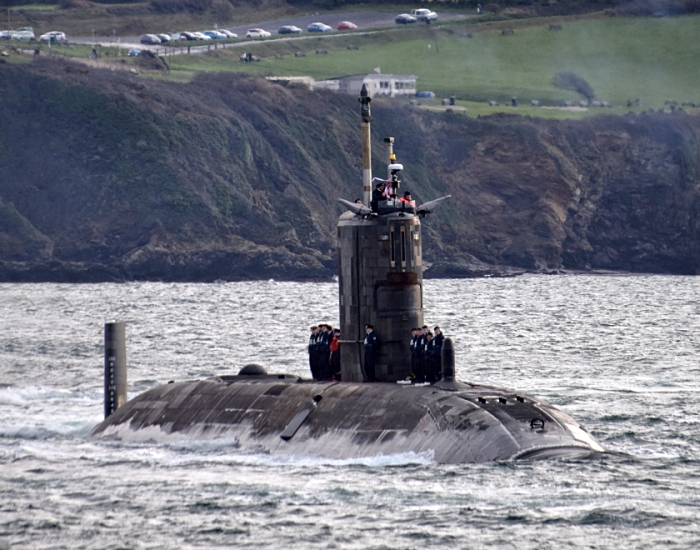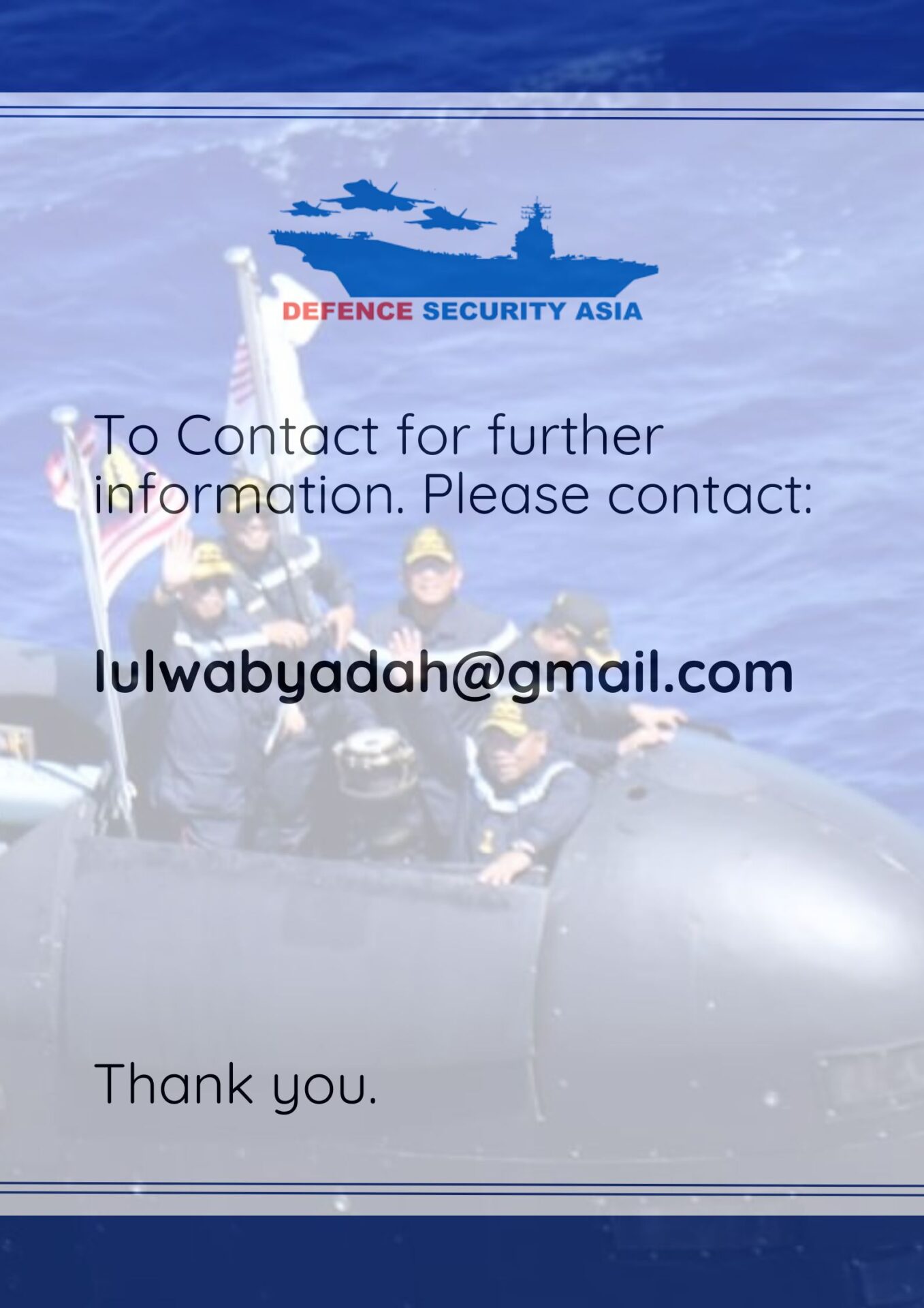Cold War Titans Retire: HMS Triumph Closes the Chapter on Britain’s Iconic T-Class Submarine Fleet
After over four decades of silent patrolling beneath the waves, the retirement of the last ‘T-boat’ marks the symbolic end of the UK’s Cold War-era hunter-killer submarine doctrine.
The Royal Navy has formally decommissioned HMS Triumph, the final operational vessel of the Trafalgar-class nuclear-powered attack submarines, drawing the curtain on one of the most storied underwater warfare fleets in British naval history.
After over four decades of silent patrolling beneath the waves, the retirement of the last ‘T-boat’ marks the symbolic end of the UK’s Cold War-era hunter-killer submarine doctrine.
Known collectively as T-boats, the seven submarines of the Trafalgar-class served as the backbone of Britain’s nuclear-powered attack submarine (SSN) fleet, often operating undetected beneath hostile waters during some of the most sensitive global conflicts of the past 40 years.
HMS Triumph’s official decommissioning ceremony took place at Devonport Naval Base in Plymouth—the class’s long-time home port and one of the largest naval bases in Western Europe.
The event was attended by serving crew members of HMS Triumph and her sister ship HMS Talent, as well as Royal Navy veterans, submarine service officers, and members of the Royal Naval Association, all gathered to pay tribute to the boat’s decades of service.
The ceremonial parade at HMS Drake featured a Guard and Colour Party composed of submariners from Triumph and Talent, supported by contingents of retired personnel who once served aboard T-class submarines.
Among the notable attendees were Captain Dave Burrell—a senior Royal Navy officer who spent much of his career aboard the class—and Lady Hamilton, Triumph’s official sponsor, who had been present since the boat’s commissioning.

Adding historical gravitas to the ceremony was the presence of 100-year-old World War II veteran John Harlow, who had served aboard earlier T-class diesel-electric submarines, including HMS Truculent, during the post-war years of heightened Soviet-Western tensions.
Captain Burrell, delivering a poignant tribute, stated, “They are the last of the Cold War warriors, although the Cold War never went away. We continued to play our dangerous game.”
Reflecting on his initial deployment aboard HMS Tireless in 2003, he described the experience as awe-inspiring, calling the vessel “a marvel” and praising its crew as “inspiring.”
Commissioned in 1991 at a time when the Soviet Union was collapsing but submarine warfare remained vital, HMS Triumph completed an impressive 34-year career as the last of her class.
The Trafalgar-class fleet included HMS Trafalgar, Turbulent, Tireless, Torbay, Trenchant, Talent, and Triumph—all designed during the Cold War with the primary mission of detecting and neutralizing Soviet ballistic missile and fast-attack submarines.
Initially built to counter the USSR’s deep-diving, titanium-hulled nuclear boats like the Alfa and Akula-class, the Trafalgar-class SSNs later transitioned into strategic platforms supporting special operations, undersea intelligence-gathering, and land-attack missions using Tomahawk missiles.
At the height of their operational use, the T-boats were among the quietest nuclear submarines in NATO’s arsenal, significantly outperforming their Soviet counterparts in acoustic stealth and sensor fusion.
Each boat measured 280 feet in length and displaced 5,300 tons submerged, powered by a Rolls-Royce PWR1 pressurized water nuclear reactor that delivered pump-jet propulsion at submerged speeds exceeding 32 knots (59 km/h).
Their armament suite consisted of five 21-inch torpedo tubes capable of deploying up to 30 heavyweight Spearfish torpedoes for anti-submarine and anti-ship warfare, alongside UGM-109 Tomahawk Land Attack Missiles (TLAMs) with a combat range of over 1,200 miles (1,930 km).
One of HMS Triumph’s most legendary deployments occurred in 1993, when the submarine completed a record-breaking submerged transit of 41,000 miles to Australia—the longest solo mission ever completed by a British nuclear submarine.
This epic voyage demonstrated not only the range and endurance of the class, but also the skill of its crew in operating under extreme isolation for extended durations.
In 2001, HMS Trafalgar became the first of her class to fire Tomahawk cruise missiles during combat operations in Afghanistan under Operation Veritas, marking the beginning of the class’s long-range precision strike legacy.
HMS Triumph would later follow suit, launching TLAMs against Taliban and al-Qaeda positions in the same theatre.
In 2003, HMS Turbulent contributed to Operation Telic, the UK’s role in the U.S.-led invasion of Iraq, launching 30 Tomahawk missiles during the initial phase of the air campaign and returning to base flying the Royal Navy’s traditional “Jolly Roger” to signify successful combat action.
HMS Triumph would again deploy its TLAMs in 2011 during NATO’s Operation Unified Protector, targeting Libyan air defence infrastructure during strikes aimed at halting the Gaddafi regime’s assaults on civilians.
Upon returning to Devonport, Triumph flew the Jolly Roger and bore six markings on her sail, symbolising six successful missile launches—reaffirming her role as a potent offensive asset in British strategic strike capability.
The Trafalgar-class also evolved into vital platforms for clandestine operations, often deploying Special Boat Service (SBS) commandos and intelligence teams for missions that remain classified to this day.
These submarines offered unrivalled covert insertion capabilities in hostile territory, a mission set that is being further developed in the newer Astute-class submarines.
With HMS Triumph’s final return to Devonport in December 2024, the Royal Navy has now fully completed its transition to the Astute-class—a more advanced SSN platform designed for 21st-century threats.
The Astute-class, led by boats such as HMS Ambush and HMS Artful, offers improved stealth, larger payloads, better sonar systems, and extended operational endurance, with the final boat in the series—HMS Achilles—expected to enter service later this decade.
However, even as the Astute-class takes centre stage, plans are already underway for the next generation of UK nuclear-powered attack submarines, known as the SSN-AUKUS program, jointly developed with Australia under the historic AUKUS security pact.
These future submarines are expected to combine British design experience with American propulsion and weapons systems, shaping the Royal Navy’s underwater warfare capability well into the 2060s.
As the geostrategic contest with China intensifies in the Indo-Pacific, and Russian naval activity resurges in the North Atlantic, undersea dominance remains a top priority for NATO and its allies.
For the United Kingdom, saying farewell to the Trafalgar-class does not merely signal the end of a technological lineage—it is the final bow of the Cold War’s silent sentinels.
Captain Burrell’s parting words best captured the moment: “It is time to rest easy Trafalgar, Turbulent, Tireless, Torbay, Trenchant, Talent and Triumph. It’s now someone else’s turn.”


